Web UI vs. Python
With Oxen.ai you can either perform your labeling workflows directly in the web interface, or build your own using the Python Library.Using the UI
Oxen.ai has a data frame interface built in that allows your to view, query and edit any csv, json, or parquet file. The data can be multimodal, allowing you to see images and text side by side.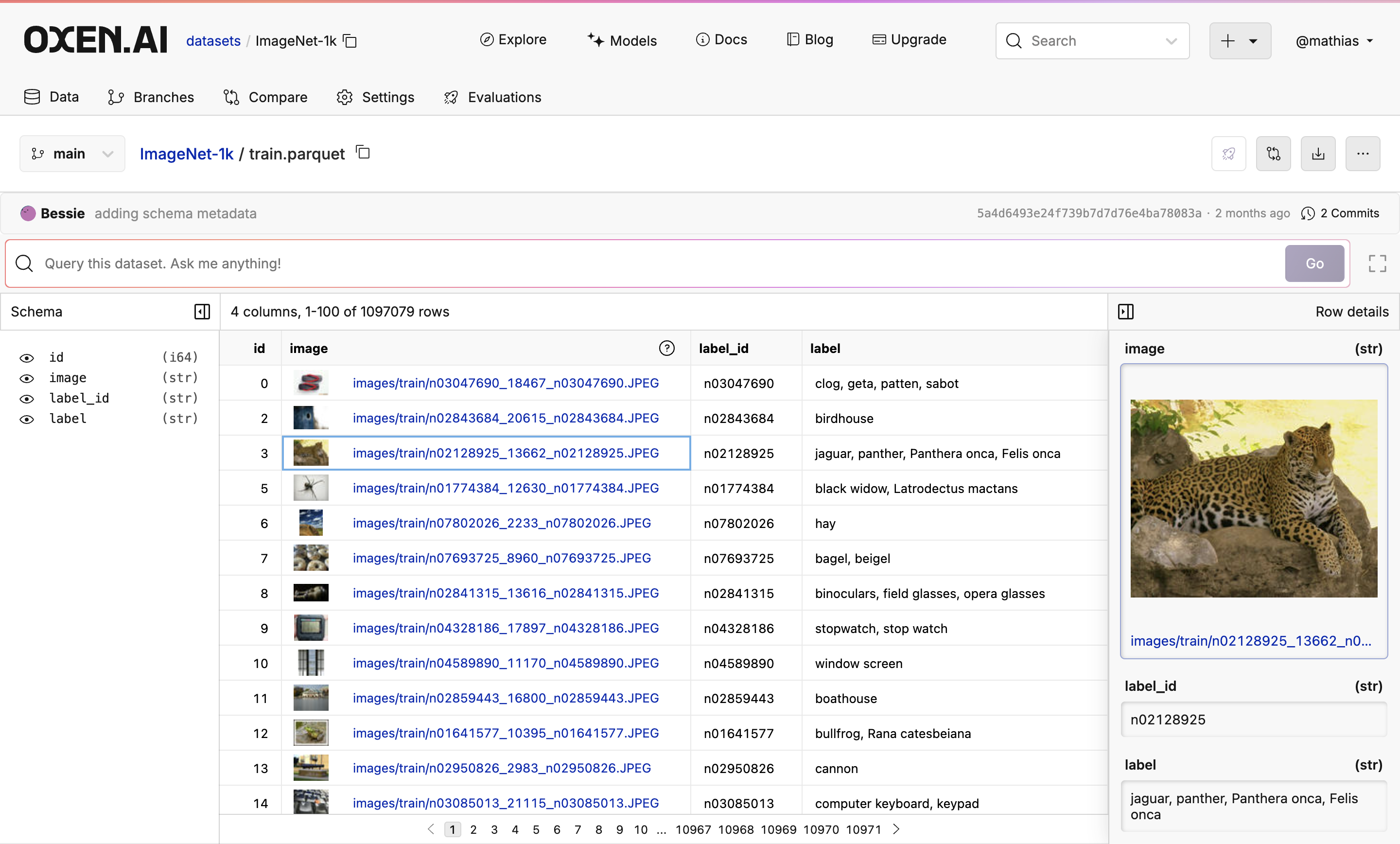
Upload Your Dataset
Navigate to the repository you want to work with, or create a new one. If you need starter data, you can find example datasets on our explore page. To follow along with the example, you can clone the Synthetic Political Spam Dataset we are using.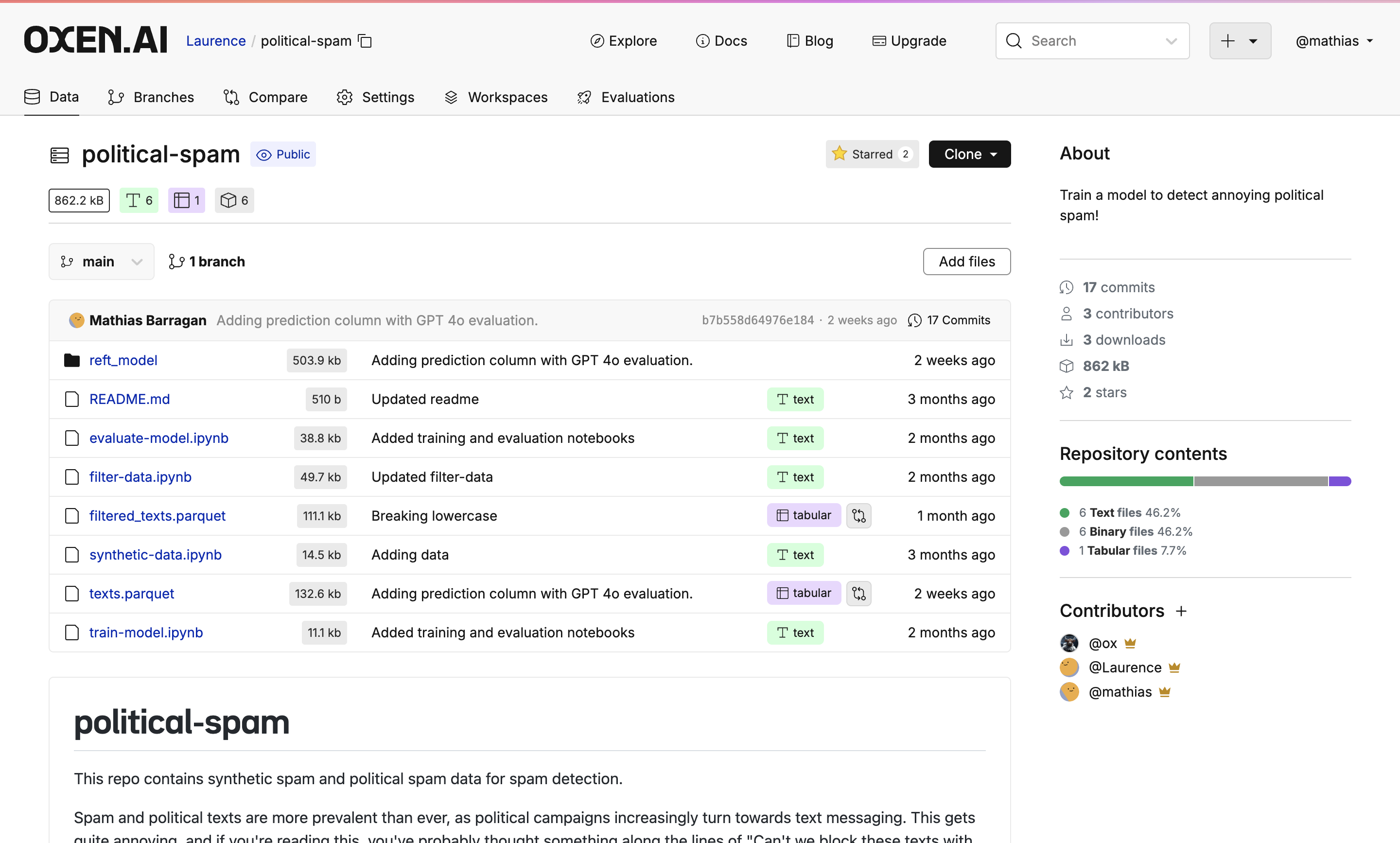
Edit File
Open the file you want to edit and press the Edit button above your data.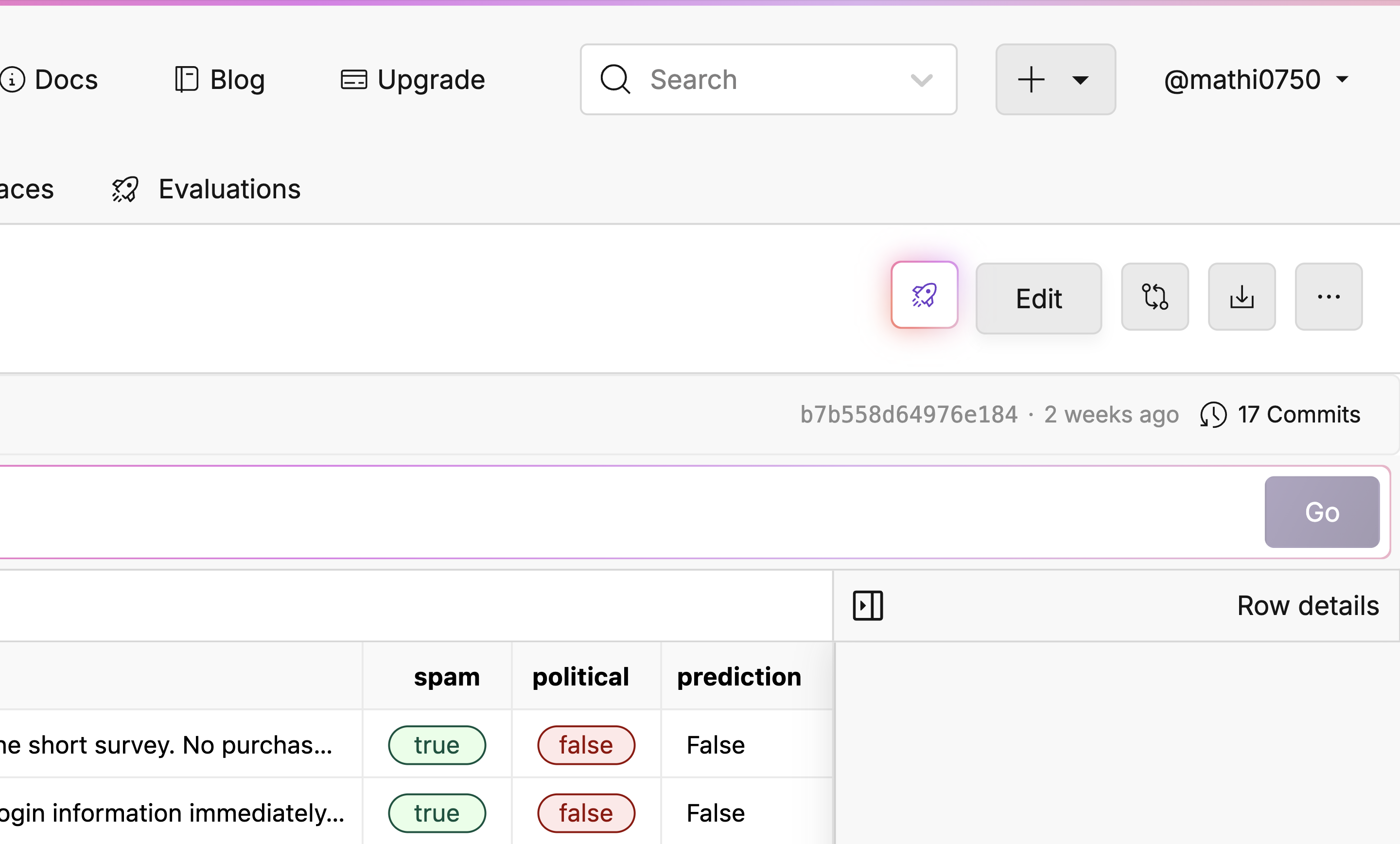
Editing Columns
To edit columns, go to the Schema section on the left of your dataset. Here, there are four actions you can take:- Add a Column: Click the Add Column button.
- Delete a Column: Click the Trash icon next to the column name you would like to delete.
- Edit a Column: Click the pencil icon to change the column name or the data type.
- Hide a Column: Click the Eye icon to the left of the column name you would like to hide for the edit.
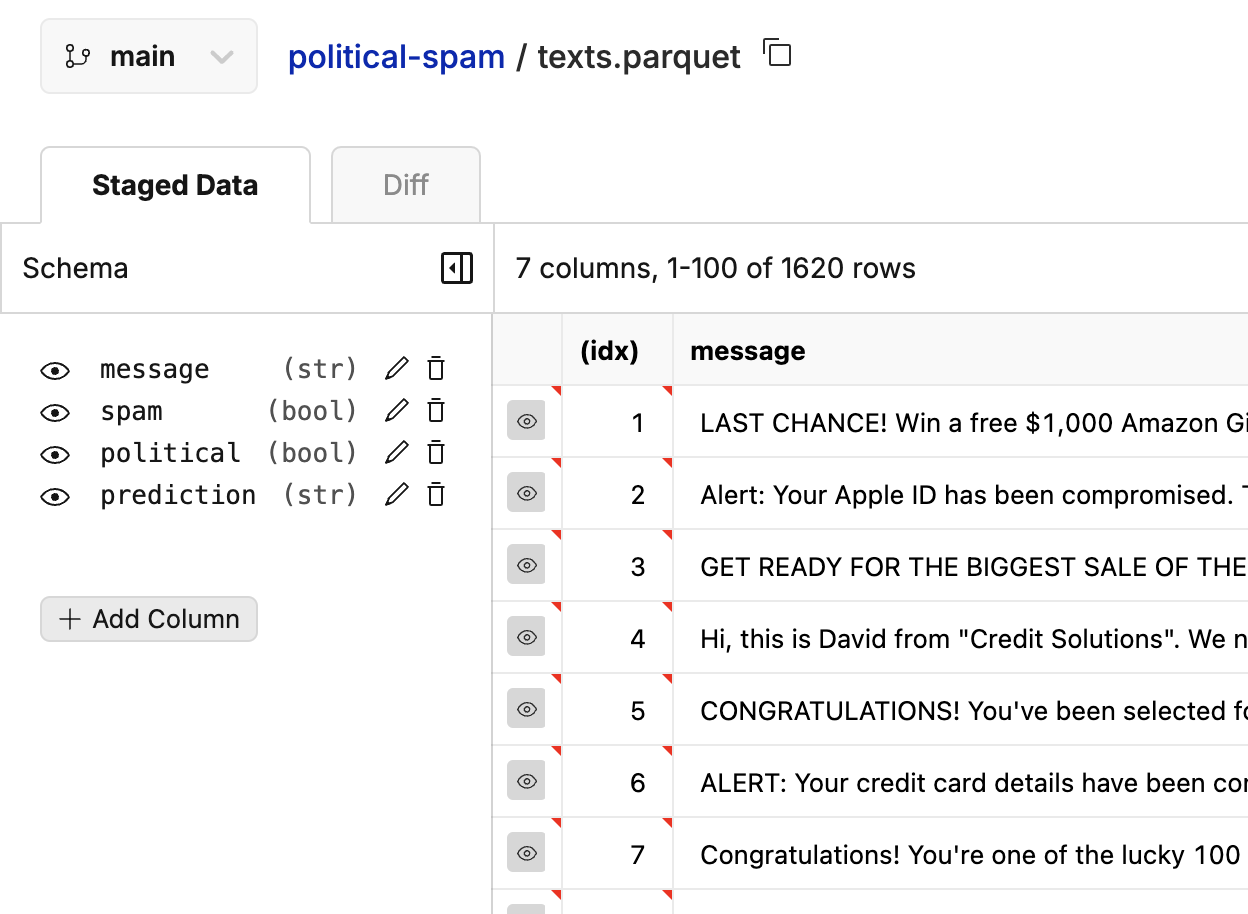
Editing Rows
To edit your rows, there are two actions you can take:- Add a Row: Click the Add Row button to get a new blank row at the end of your dataset.
- Delete a Row: Click one of the cells in the row you would like to delete. Then click the large red “delete” button on the right of the screen.
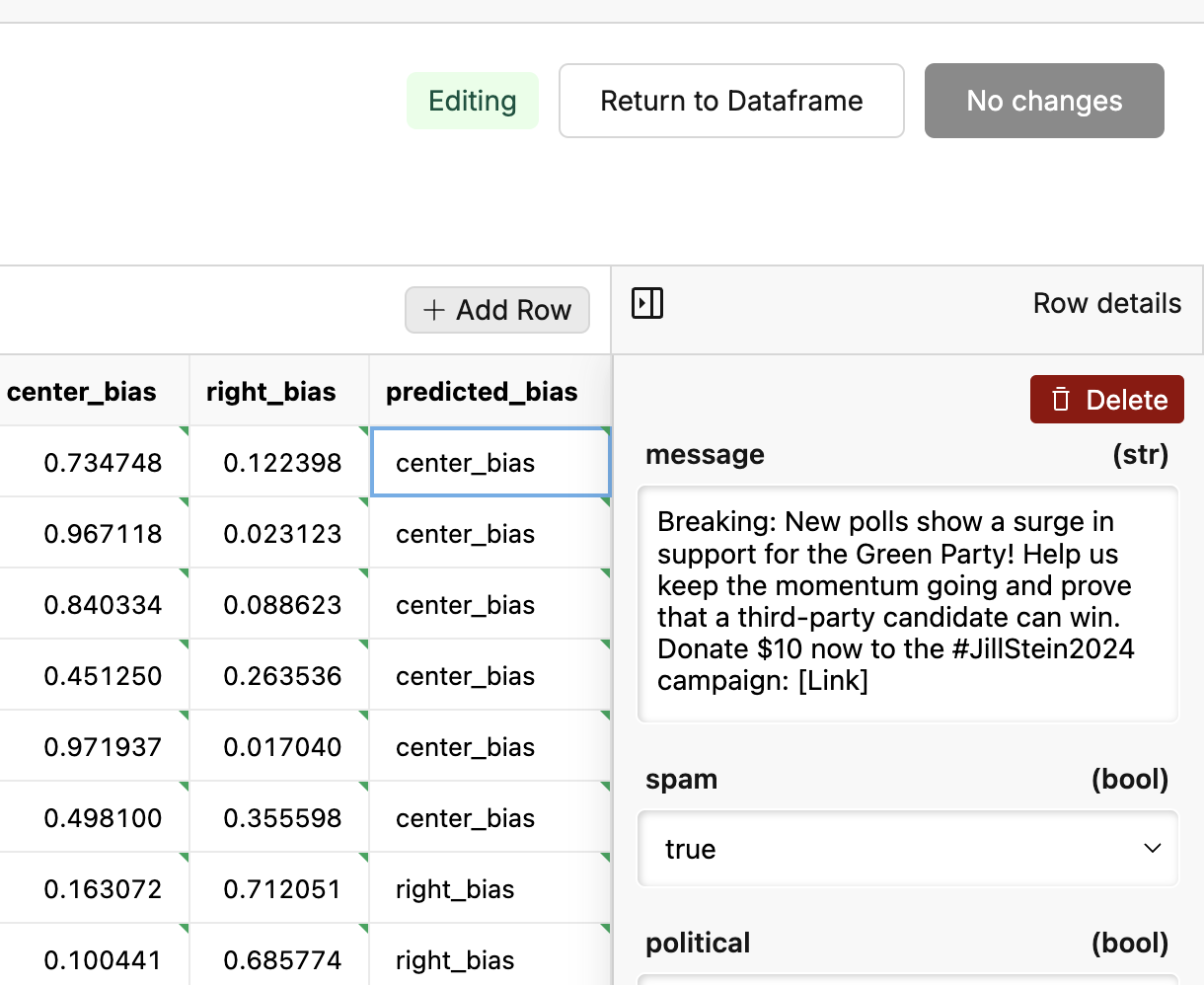
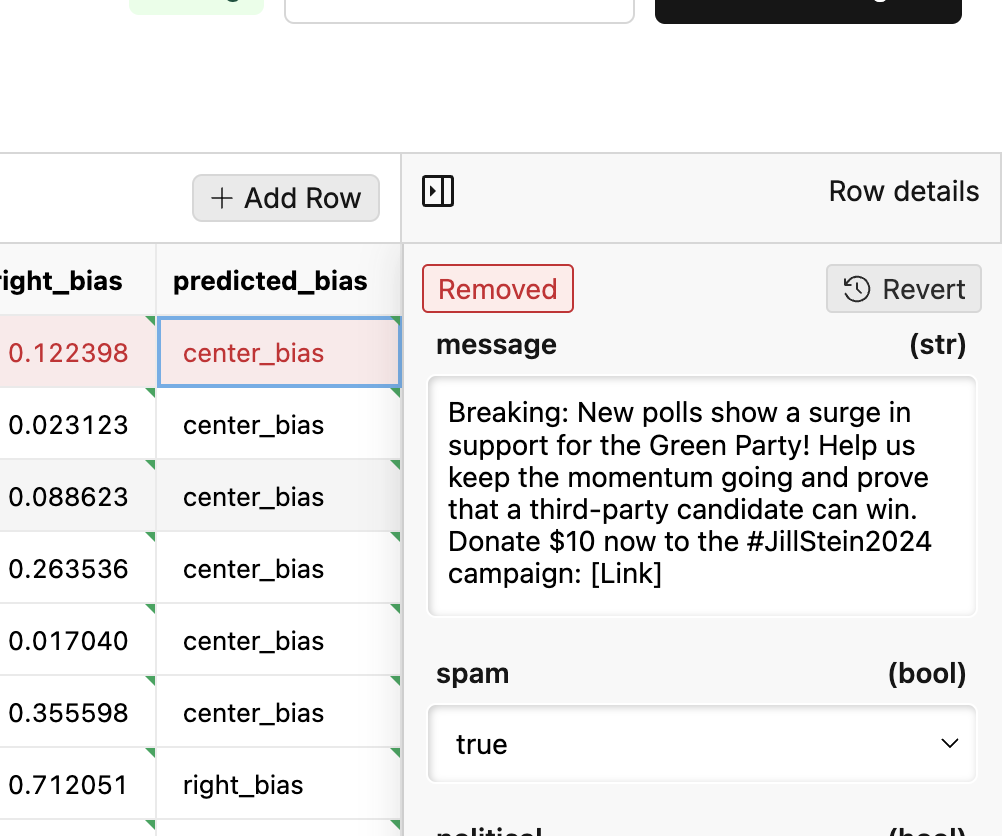
Editing Cells
To edit cells, click on the cell you would like to edit and make any changes you would like to the data. Then click the Save button to save progress.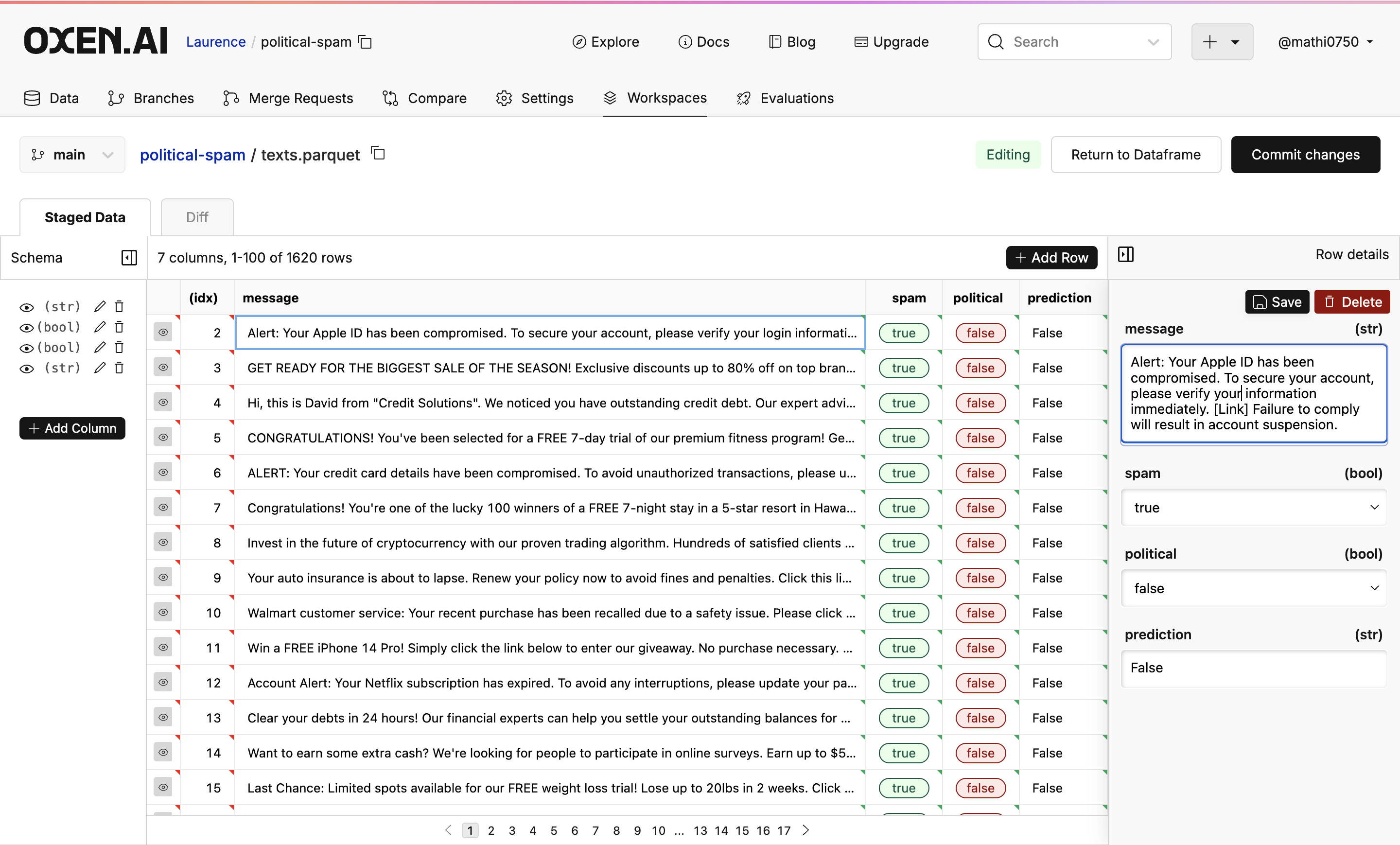
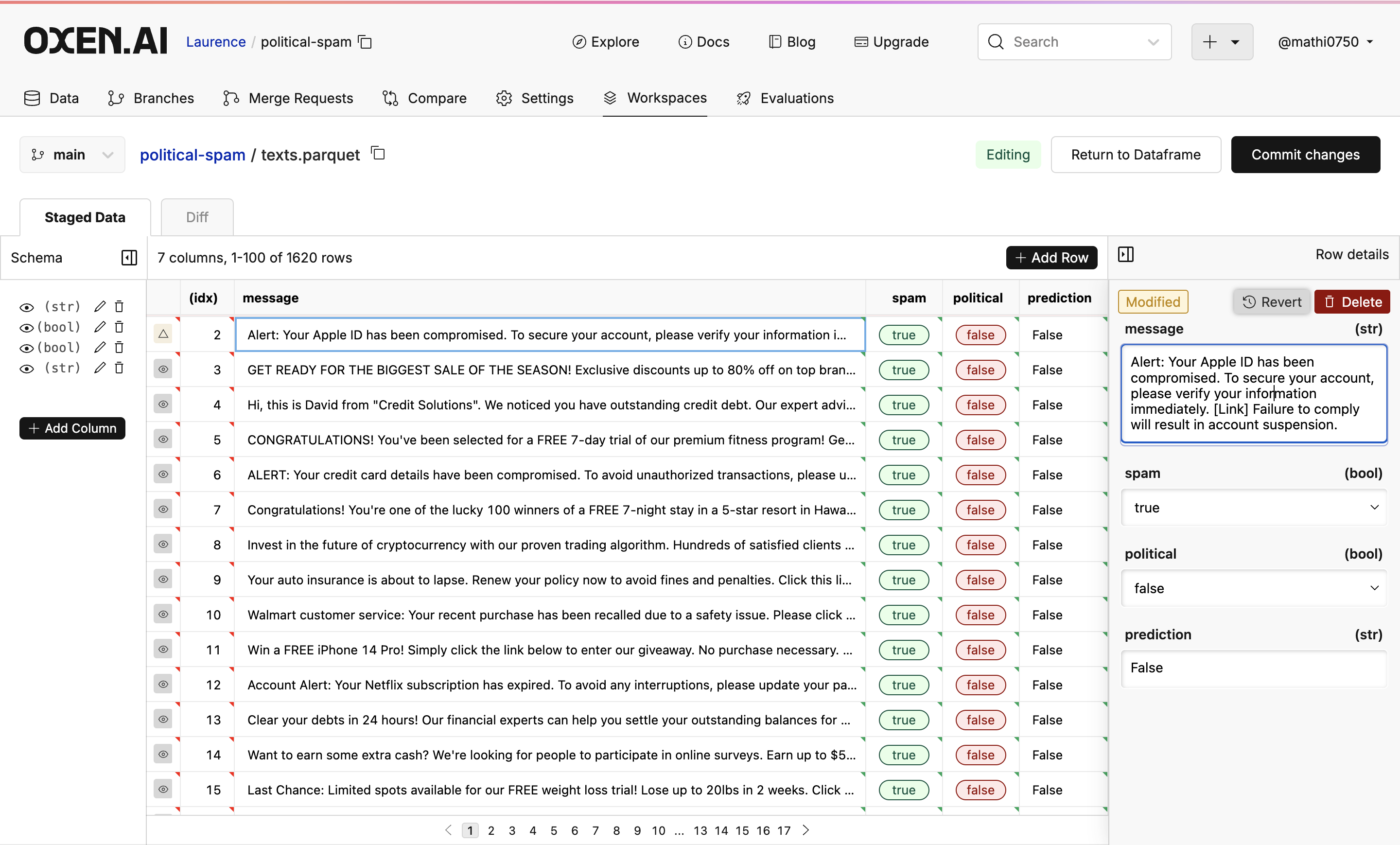
Committing Changes
To commit your changes, click on the Commit button, write your commit message, choose the branch, and click “Commit changes”.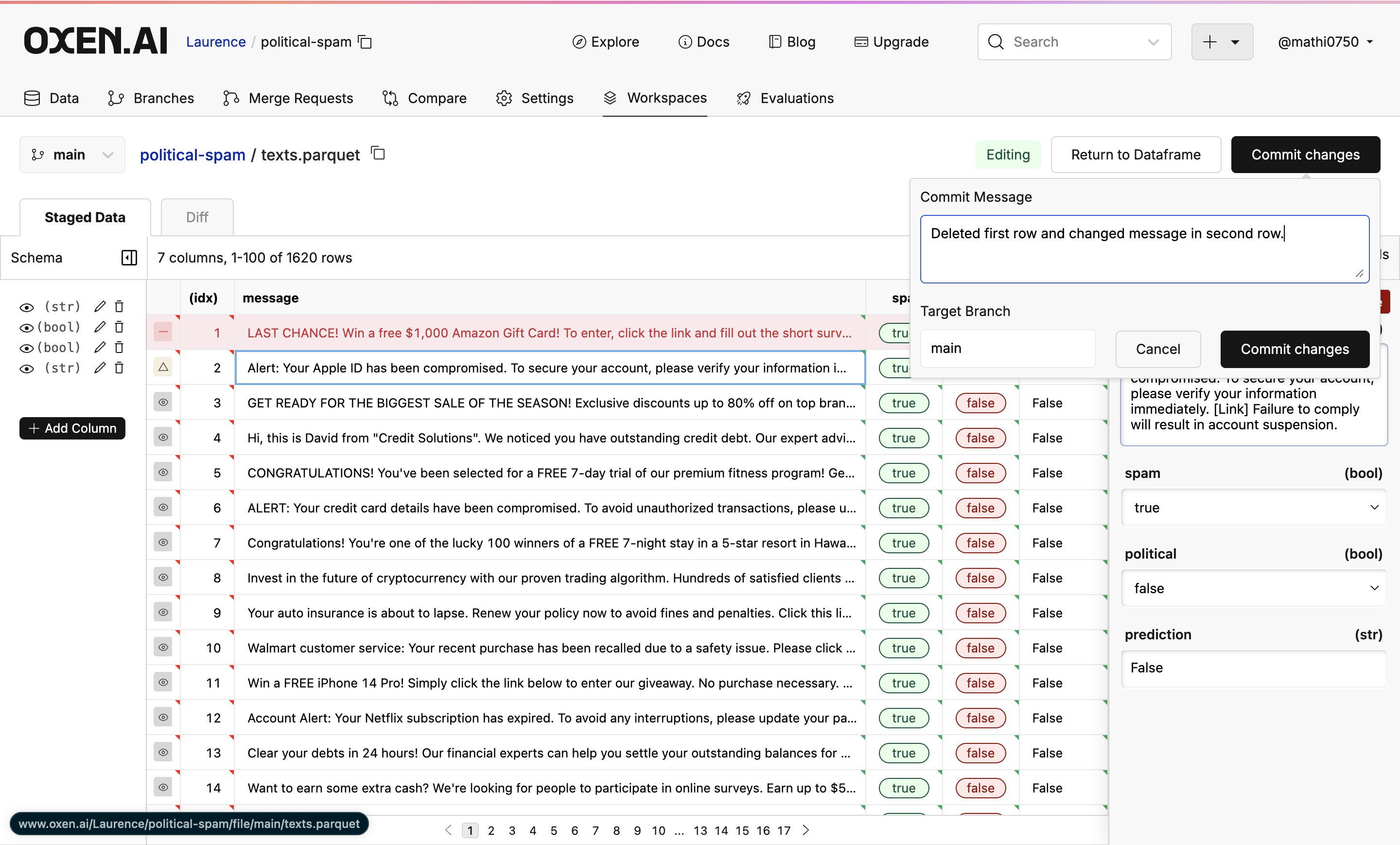
Returning to Data Frame
To return to the original dataframe, click the Return to dataframe button on the left of the commit button.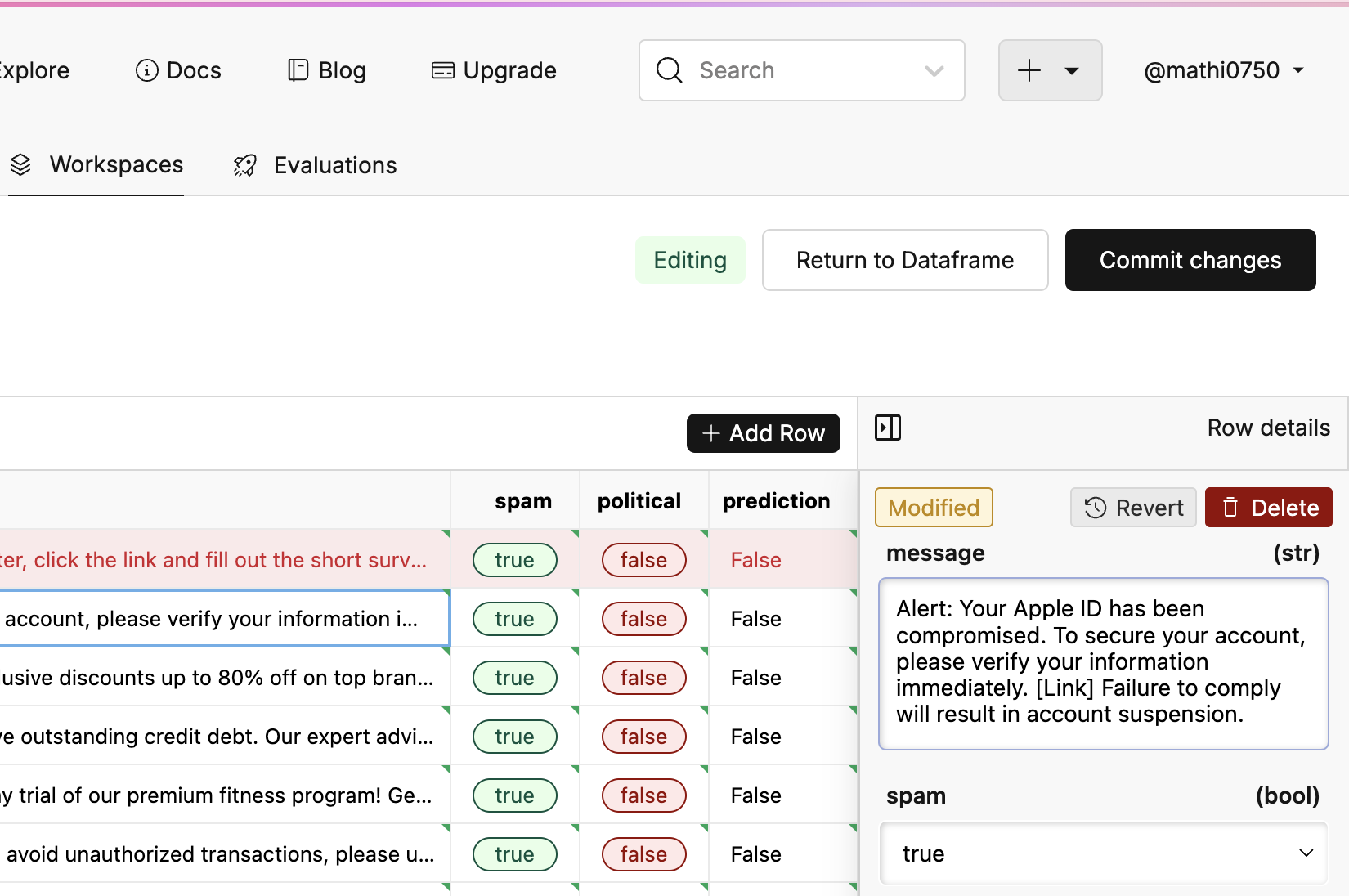
Using the Python Library
The web interface is built on top of HTTP APIs that are also exposed through Oxen.ai’s Python Library. This makes it easy to interact with data frames programatically and build your own custom labeling tools. Under the hood the dataset will be indexed into DuckDB within a Workspace to make it fast to query and update the data before fully committing it back to your repository.Indexing a Data Frame
When you instantiate a DataFrame object, the data will automatically get indexed into an Oxen Workspace in an uncommitted state. This gives you fast read/write access to the data frame without committing it.Fetching Rows
To get the full size of the data frame you can use thesize() method.
get_row method.
Insert Rows
To add a row to the end of the dataset, use theinsert_row function with a dictionary that contains the column names as keys, and the row data as values. This will return an internal _oxen_id that can be used to access the same row again.
_oxen_id can be used to fetch the same row again.
Update Rows
To update a row, pass in the_oxen_id as well as the columns you want to update as a dictionary. Only the keys that are present will be updated, leaving the rest unchanged.
Delete Rows
To delete a row, pass in the_oxen_id to the delete_row method.
Committing Changes
Finally, when you are happy with the dataset, and have reviewed the changes, you can commit this dataset to the repositories history withcommit and a message.